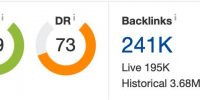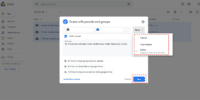How International SEO Works

What is international SEO?
International SEO is the process of optimizing websites and content for search engine users in different countries. It involves tailoring content to the language, culture, and other local nuances of each target country. By optimizing global websites and content for multiple languages, cultures, and countries, international SEO helps businesses reach customers from around the world.
International SEO requires a deep understanding of the nuances between different languages, cultures, and countries. A successful international SEO strategy should take into account factors like language preferences, local customs, currency conversions, keyword research methods, website structure for multilingual sites, link building strategies tailored to each country’s search engine algorithms, and more. With careful planning and execution of these details, companies can maximize their visibility in international markets.
Who Can Perform International Seo
International SEO is a complex process, so the best person to perform it is an experienced SEO specialist. They should have a good understanding of how search engines work and be familiar with international SEO techniques. They will also need to be aware of the cultural differences between countries and the different languages used in each country.
A good international SEO specialist will be able to research the local market, understand keywords and identify trends that can help increase visibility in other countries. They should also be able to create content tailored for each country’s target audience, as well as optimize existing content to improve its search engine rankings. Additionally, they should be comfortable working with international clients and providing them with tailored advice on how to increase their online presence in each country. All these skills are essential for anyone looking to successfully implement an international SEO strategy.
How Do I Target A Specific Country With SEO?
To target a specific country with SEO, you’ll need to make sure that your website is geo-targeted for the desired region. This means setting up the right language and currency preferences, as well as ensuring that search engines understand where the content is intended for. You can also add hreflang tags to your HTML code to let search engines know which version of a page should be served in different countries.
Additionally, you’ll want to create local versions of your content and optimize them with localized keywords and phrases. This will help increase your visibility in searches from those regions. Finally, make sure that your website is hosted on a server located in the targeted country so that it’s easier for search engines to crawl and index it. With these steps, you can ensure that you’re reaching the right people with your content in the desired regions.
How International SEO Different From Local
International SEO differs from local SEO in a number of ways. For example, international SEO must consider a different language than local SEO. International SEO also requires consideration of different countries’ digital laws and regulations and may require optimization for multiple languages or regions.
In addition, keywords used in international SEO must be tailored to the target country’s language and culture, as well as its search engine algorithms, whereas local keywords should focus on the business’ location. Local SEO also takes into account factors such as proximity to customers, while international SEO generally does not.
Finally, international SEO typically requires a more comprehensive strategy that includes content localization and marketing tactics to reach an audience in multiple countries. This can involve creating localized content that is tailored to the needs of each region or country it is targeting. It also requires more extensive research into the cultural norms and preferences of each target market, so that the website can effectively engage with potential customers from those areas.
How Fast Get Results In International SEO
International SEO requires a lot of hard work and dedication. It can take months to get the desired results, depending on the market you are targeting. However, there are some steps you can take to speed up the process.
First, it’s important to determine which markets you’d like to target and create localized content for each one. This includes optimizing your site for each location, as well as developing content specific to that region. Additionally, building relationships with local influencers can help you gain more visibility in those markets. Finally, backlinking is another effective way to increase rankings in international search engine results pages (SERPs). You should focus on getting high-quality links from authoritative sources that are relevant to your industry.
By taking these steps and making sure your content is optimized for international audiences, you’ll be able to get faster results in international SEO.
FAQ about international SEO
What are the benefits of international SEO?
International SEO offers several advantages, such as:
- Increased visibility in global markets
- Expanded reach and potential customer base
- Improved brand recognition and credibility internationally
- Higher website traffic and potential for conversions
- Increased revenue from global markets
How do you determine which countries to target for international SEO?
To identify the countries to target for international SEO, consider factors such as market size, target audience, language preferences, cultural similarities, and business goals. Conduct market research, analyze competitor strategies, and use tools like Google Trends and Keyword Planner to assess potential opportunities.
What are the key differences between domestic SEO and international SEO?
The main differences between domestic SEO and international SEO include:
- Target audience: Domestic SEO focuses on a single country, while international SEO targets multiple countries.
- Language and cultural considerations: International SEO requires understanding and adapting to different languages, cultures, and search behaviors.
- Geolocation targeting: International SEO involves geotargeting techniques to reach specific regions or countries.
- Technical considerations: International SEO includes hreflang tags, language targeting, and international domain structure.
- Content localization: International SEO often requires translating or localizing content to appeal to specific target markets.
What are the common challenges with international SEO?
Some common challenges faced in international SEO are:
- Language and cultural barriers
- Understanding and optimizing for different search engines and algorithms
- Managing multiple country-specific domains or subdomains
- Dealing with different currencies and pricing models
- Adapting content to resonate with local audiences
- Balancing centralized and decentralized SEO strategies
How do you optimize a website for international SEO?
To optimize a website for international SEO:
- Use hreflang tags to specify language and country targeting.
- Optimize meta tags, titles, and descriptions for each language version.
- Create unique and localized content for each target market.
- Implement geolocation targeting to serve the correct version of the website.
- Conduct keyword research in different languages and optimize content accordingly.
- Build high-quality backlinks from local and relevant websites.
- Ensure fast website loading speed and mobile responsiveness for different regions.
What are the best practices for creating multilingual content for international SEO?
Some best practices for creating multilingual content for international SEO are:
- Use professional translators or localization services to ensure accurate translations.
- Consider cultural nuances and idiomatic expressions when translating content.
- Create unique content for each language version instead of using automated translation tools.
- Optimize meta tags, titles, and descriptions in the target language.
- Implement hreflang tags to indicate language and regional targeting.
- Localize images, videos, and other multimedia elements to resonate with local audiences.
- Encourage user-generated content to foster engagement and authenticity.
How do you handle language and cultural differences when optimizing for international SEO?
When optimizing for international SEO, consider the following language and cultural differences:
- Use the appropriate language and keywords for each target market.
- Adapt content to suit cultural preferences, values, and sensitivities.
- Be mindful of different date formats, measurements, and currencies.
- Consider local customs, holidays, and events in content creation.
- Engage with local influencers and thought leaders to build credibility.
- Localize user experience elements, such as forms, payment options, and contact information.
What are the technical considerations for international SEO?
Some important technical considerations for international SEO include:
- Implement hreflang tags to indicate language and regional targeting.
- Use geolocation targeting to serve the correct version of the website based on user location.
- Choose appropriate URL structures, such as country code top-level domains (ccTLDs), subdomains, or subdirectories, to target specific regions.
- Ensure proper implementation of rel=”canonical” tags to avoid duplicate content issues.
- Optimize website speed and performance for users in different countries.
- Set up language and region targeting in Google Search Console.
- Use structured data markup to provide localized information to search engines.
- Implement international SEO-friendly navigation and site architecture.
- Conduct regular technical audits to identify and fix any issues that may impact international SEO efforts.
How do you measure the success of international SEO efforts?
To measure the success of international SEO efforts, consider the following metrics and techniques:
- Track organic search rankings in target countries and languages.
- Monitor organic traffic and conversions from different regions.
- Analyze user engagement metrics, such as bounce rate, time on page, and conversion rates.
- Utilize web analytics tools, like Google Analytics, to assess international traffic patterns.
- Set up and monitor international SEO-specific goals and funnels.
- Compare performance across different language versions or regional websites.
- Conduct regular SEO audits to identify areas for improvement and optimize accordingly.
- Monitor and respond to feedback from international users and customers.
Final Thoughts
I have discussed how international SEO is done and who can perform it. It is different from local SEO, as it involves targeting people in different countries and requires a more strategic approach. To get the best results, it’s essential to be aware of the differences and use the right techniques to ensure that your website is reaching its full potential.
It’s important to remember that international SEO takes time and dedication – there may not be immediate results, but with the right strategies in place, success will come. Furthermore, you should focus on creating content specifically for each country you are targeting – this will help boost your chances of top rankings.
International SEO can be a great way to increase website visibility and reach new audiences. However, it does require a tailored approach so make sure you understand the differences between local and international SEO before you start. With some hard work and dedication, you can see great results!









